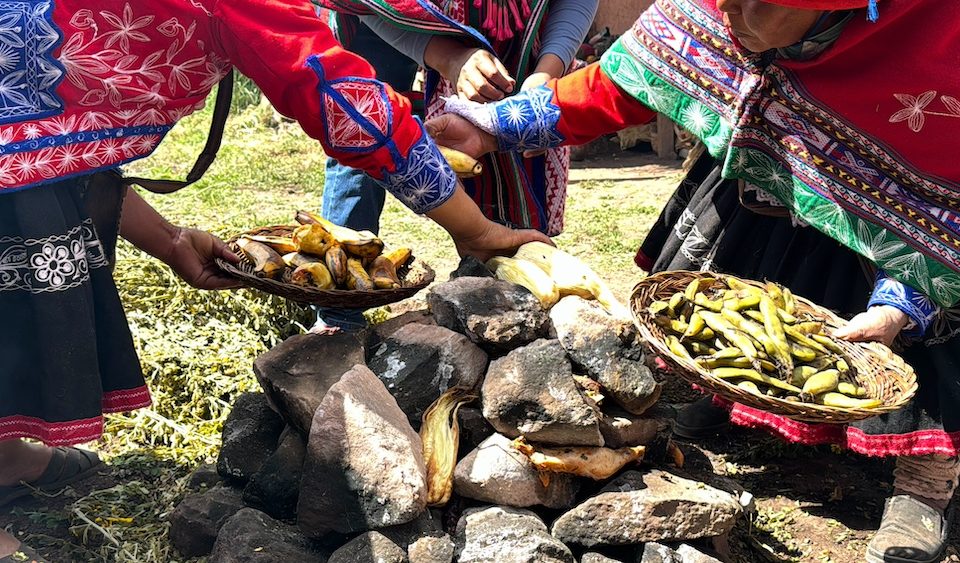You may have plucked up the courage to try cuy or sink your teeth into an alpaca steak, but if you haven’t tried a ‘pachamanca experience ‘ you are missing out.
This ancient Inca ritual is one not many tourists know of, and yet we consider it to be one of the best culinary experiences you can have in your life.
In Peru, adventurous eaters have the opportunity to enjoy some of the world’s most unique dining.
You just need to know what is on offer.
From the world famous raw fish ceviche to the oriental fusion of lomo saltado, Peru boasts arguably the best cuisine in South America.
Peruvian food, just like its culture, has maintained its mystique.
Pachamanca -A classic ancient Inca ritual
Stepping out of Cusco’s city walls, you might be lucky enough to find a pachamanca.
But this is an ancient Incan dining ritual that is rarely experienced today.
A pachamanca experience is the Inca tradition of burying and baking foods found in the fields surrounding a community.
Taken from the Quechua words ‘pacha‘ meaning earth and ‘manka‘ meaning pot, it is essentially a Peruvian-style barbecue which takes hours to prepare.
For us to be able to try this dining experience, a visit the Sacred Valley was in order.
As a result, we were able to connect with a Quechua-speaking community.
Because the preparing of foods and construction of the earth oven can take up to two hours, a pachamanca really is a labour of love.
Since they are usually reserved for special occasions, pachamanca ceremonies are a delight to behold.
Setting the scene
A hole is dug and then lined with large, round piedras or stones, which gradually heat to soaring temperatures.
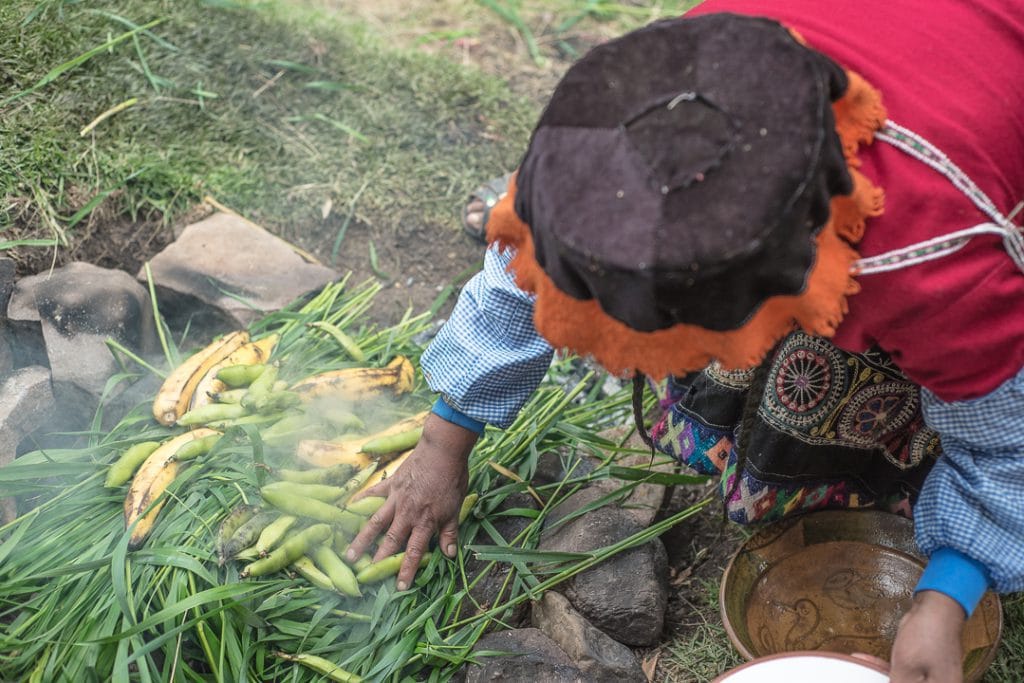
More stones are placed over the smoking fire, supported by metal beams that enable the flames to be stoked and added to.
The heat had warmed the clean, fresh air of the mountainous land and our stomachs had started to rumble.
While we waited, we welcomed the tranquil pace of life enjoyed in the Sacred Valley.
We spent time exploring fields of medicinal plants normally found on supermarket shelves.
And, as we asked the mountains for protection in a traditional prayer, a sudden flurry of activity brought us back to reality.
It was almost time for lunch, and the feast was entering its final stages of preparation.
If you would like to have this experience, take a look at this amazing Experience:
Meeting the descendant of the Incas & Pachamanca Experience – Full day tour
The produce
Bowls of organic foods were produced; potatoes of the deepest purples and tropically hued plantains.
Comfort zones were pushed at the sight of two skinned cuys (guinea pigs), nestled next to one another and ready for roasting.
It was all the proof we needed that a pachamanca experience is not your average cook out; everything eaten here is locally sourced and as fresh as can be.
Spades were produced and the layer of stones supported by metal brackets were hastily removed.
This is certainly not a job for the faint-hearted.
Therefore, we could only watch as Santos, a skilled pachamanca leader, fearlessly shovelled fiery hot piedras.
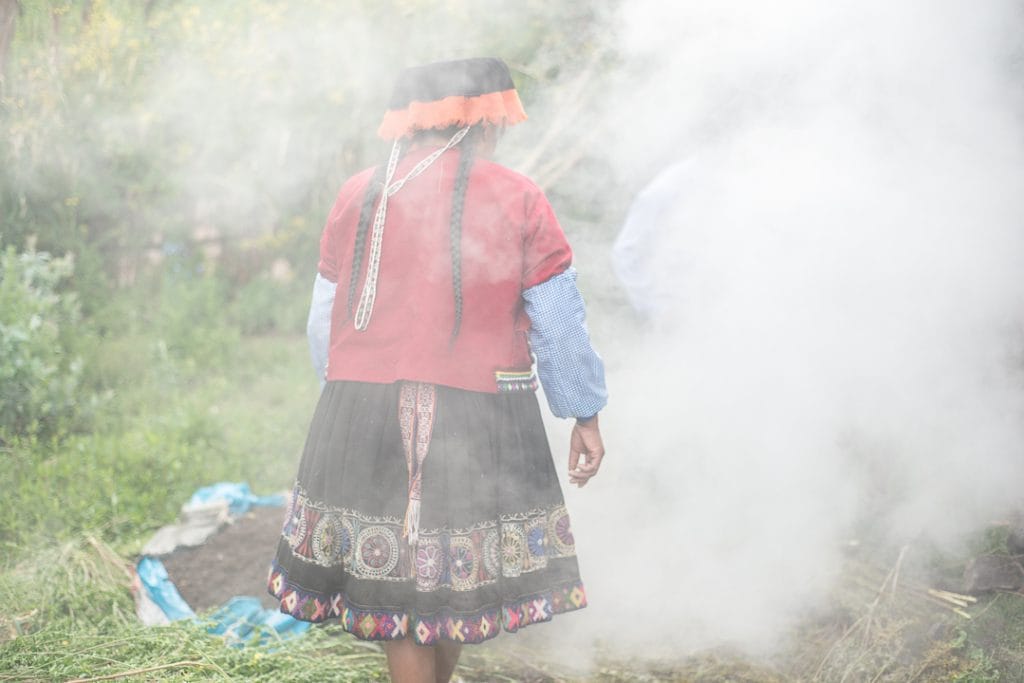
First came the burying of beef, pork and potatoes, followed by poultry and cuy.
A final layer to be steamed consisted of plantains and habas, an Andean variety of the broad bean.
Finally, our feast was sealed by leaves and mud, leaving us in excitement for the final countdown.
The pachamanca experience moment of truth
Half an hour later, the smell of earth and freshly cooked meat surrounded us.
Smoke billowed from the pachamanca as it was uncovered and bowls were re-filled with food carrying a distinct flavour.
Cooked to perfection in this underground oven, all that was left to do was eat.
This food was so abundant in goodness, so satisfying and flavoursome in taste.
We feasted on the goods of the lands around us and drank chicha, a fermented corn beer.
Since we had been immersed in tradition and culture from start to finish, it was a meal unlike any other dining experience.
Hence it made lunching at a restaurant seem tame.
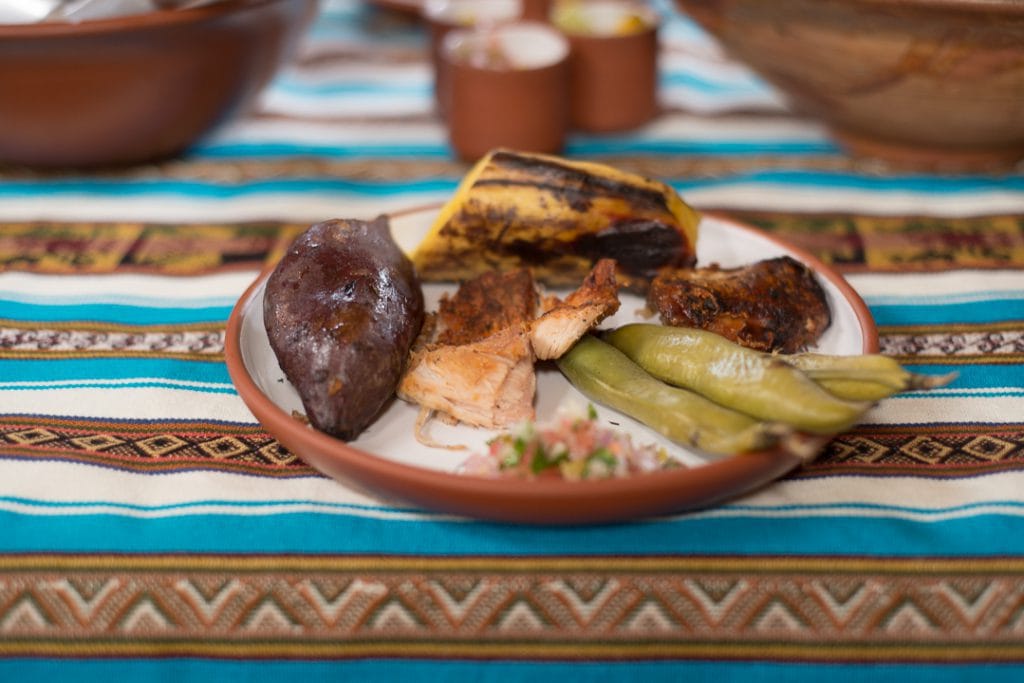
The Incas believed that natural life forms are nurtured by Pachamama, the ancient goddess mother earth.
Embodied by the mountains and manifested in the harvests of the people who shared their feast with us, Pachamama had left us with a lasting feeling of fulfilment and thanks.
In conclusion, a pachamanca is more than just a meal.
Its traditions, processes and symbolic nature let those who are lucky enough to participate get a glimpse of the life led by Incas.
Therefore, it is a must for anyone who puts food – and the stories behind it – high on their travelling priorities list.
Thanks to Asociación La Tierra de los Yachaqs who organized this day for us.
This association seeks to empower the community enterprises of the Sacred Valley of the Incas through self-management of their own tourism initiatives.
If you would like to have this experience, take a look at this amazing Experience:
Meeting the descendant of the Incas & Pachamanca Experience – Full day tour
Pin it!
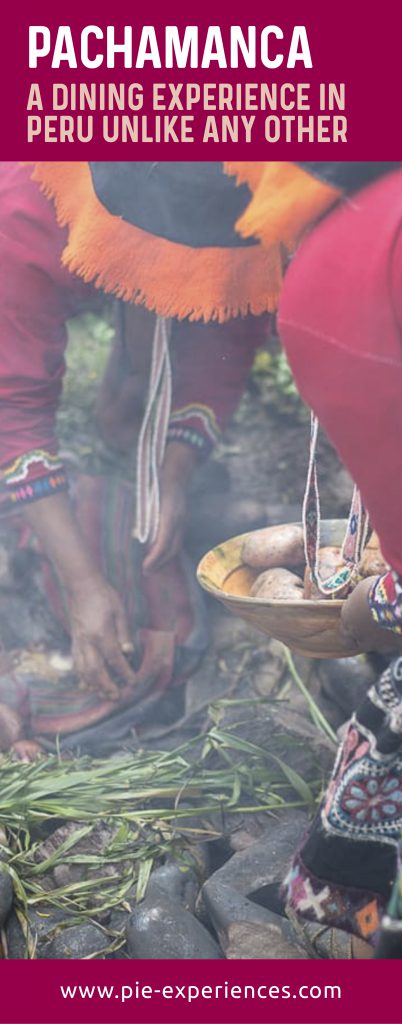
Where have you experienced your most unique dining experience? Would you like to try Pachamanca in Peru? Share your thoughts in the comments below!



